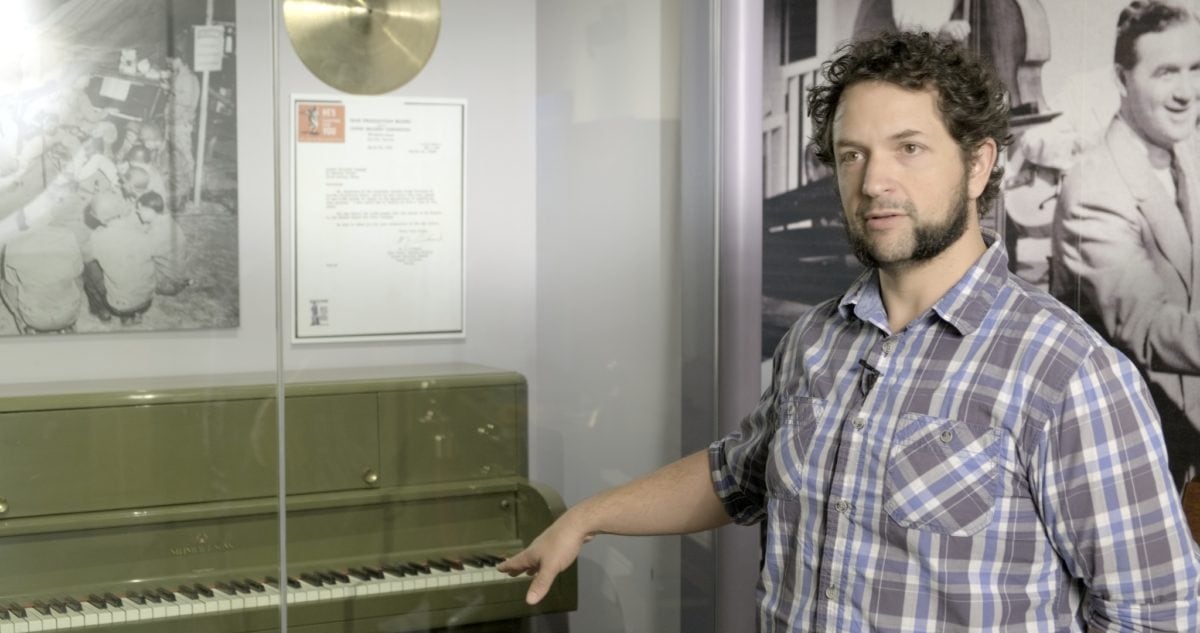Docu-Style Videos for Museums
One type of video that has been gaining in popularity is the documentary-style (docu-style video). Museums have been using these for a while and they work great for marketing (especially in today’s content-hungry social environment), enhancing exhibits, or even as a stand-alone attraction. Docu-style videos tend to be more emotionally engaging and story-driven than typical marketing videos and are useful in brand messaging. They also are more entertaining (and educational) than a photo or plain B-Roll.

So How Can We Create Documentary Videos for Museums?
There are many ways to find a great story and create a captivating video for museums and it differs from museum to museum. For now, we’ll look at history-focused institutions.
Finding Stories for Docu-Style
One of my favorite methods is to start with docent interviews. This has multiple advantages. First, docents typically have unmatched knowledge, experience and passion for their topics. Second, they love to share, and third, we acquire raw footage of their experiences and presentations to be preserved and enjoyed for years to come.
Another effective method can be to identify new or popular exhibits and determine if adding a documentary-style video would add value to that area. These videos share additional information on a subject, analyze an event or show Behind-the-Scenes (BTS) for exhibit creation.
We can also look for stories that need to be told, support a cause or that are of interest to a demographic to create new exhibits and accompanying videos.
Interviews
Great documentary videos require great interviews as it is the interviewees telling the story. No matter how well we know a story we have to get the interviewees to tell it. This is not usually an issue with docents, but it is still great to come prepared and know what to ask and how to ask it. At Storybook we are always happy to conduct interviews, but in case you would rather ask the questions yourself here are some of my personal tips for interviewing.
Interview Tips
- Always have someone not behind a camera to ask the questions. It almost never works to connect with the subject with a camera between you. It is best to have someone else watch the camera and monitor audio (even better if you can get a Sound Field Mixer).
- Research. Do your best to know the subject as well as you can. It helps to understand what you are asking about and to be able to keep the conversation going because you at least know the basics.
- Expect to learn something yourself. No matter what your background is or how much research you have done we can always expect to uncover something we don’t know and should actually hope for it.
- Make a note of the for-sure things you need to touch on. Getting what you need upfront frees you up to dig deeper and explore the subject later.
- Eliminate verbal acknowledgments but maintain facial expressions and responses.
- Never interject.
- Unless you’re doing some hard-hitting journalism, never contradict. You don’t want to offend your interviewee or lose their trust.
- I find it best to always put my focus on the interviewee and connecting with them. Listening to them, hearing their story and making them feel valued is more important than the interview or the project and will often achieve better responses.
More Than Interviews
Beyond the interviews and using them to structure a documentary piece we will need other assets to support and enhance the story. Freshly captured B-Roll is always great and can bring new life to an exhibit. If the focus is on a living person, following them for a day in the life or capturing some Behind-the-Scenes is always a great idea.
Historical Assets and Archive Materials
One of my favorite ways to add interest to historical docu-style video is with archive media. This can be in the form of old videotapes, film reels, photographs, artwork and designs or old writings, etc. These come can come from a museum’s archives or donations or even home collections (i.e. home movies). I’ve had great success on the internet tracking down public domain media on the National Archives, Internet Archive, among other archive sites. I’ve even found media on blogs and places like eBay. And when in doubt it never hurts to ask permission. It’s also good to understand Public Domain and Fair Use (maybe a post on that later).
Here is a series we did with USS Midway Museum docent and veteran Jack Scott that shows what you can put together with an interview and a little digging for historical assets.
As a bonus read, Digital Bard has some great thoughts on docu-style (among other) videos for museums here.
